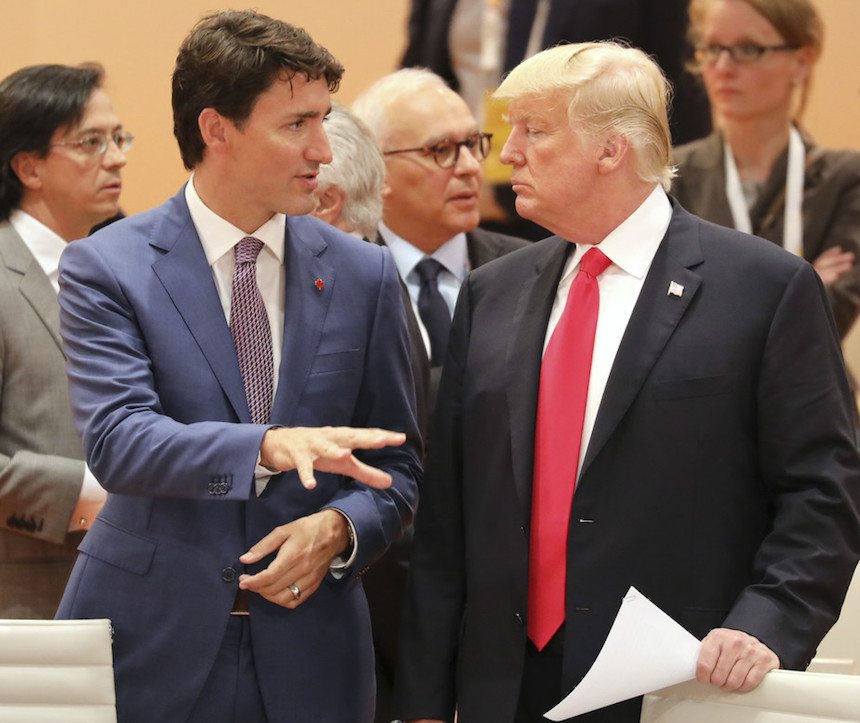
When the US and Canada first signed a free trade agreement in 1987, the biggest sticking point in forging a deal was the inclusion of a dispute settlement clause. The same is true today, with the North American Free Trade Agreement (NAFTA) between Canada, the US and Mexico up for renegotiation.
Like many other international agreements, NAFTA mandates standards of treatment for investors. In particular, it allows investors to sue governments if they introduce new laws or policies that might reduce profits. This is done through investor state dispute settlement (or ISDS). Lawsuits are brought before international arbitration panels that operate under rules similar to those used for the resolution of international commercial disputes.
While this mechanism is widely accepted in international business, it became hugely controversial when companies started to use it to challenge measures introduced by governments to protect the environment and public health. A major focus of concern is how NAFTA’s investor protections can inhibit regulation aimed to reduce pollution or carbon emissions, or preserve natural resources such as fresh water. The ISDS mechanism makes it possible for companies to attempt to declare any new environmental protections unlawful. Or there is “regulatory chill”, where states avoid legislating in areas where they may face suits.
 Former Canadian prime minister, Brian Mulroney, pushed for the inclusion of a dispute settlement mechanism in the first US-Canada trade deal.
Former Canadian prime minister, Brian Mulroney, pushed for the inclusion of a dispute settlement mechanism in the first US-Canada trade deal.
A1C Lynch via Wikimedia Commons
Canada has been on the receiving end of a number of suits, primarily from US investors. About 63% of claims against Canada involved challenges to environmental protection or resource management programmes that allegedly interfered with the rights of foreign investors. The US, meanwhile, has never lost a NAFTA investor-state case.
It is for precisely this reason that you would expect Canada to come out against the inclusion of a dispute settlement mechanism in NAFTA. Yet, such a mechanism is expected to be a red line issue for Canada when renegotiating the treaty. Meanwhile, the US wants to eliminate it.
A matter of protection
The reason that Canada remains keen on maintaining NAFTA’s dispute settlement clauses is the need to protect itself against a revanchist US. Trump, obsessed with regaining power on all fronts, wants to repatriate dispute resolution into the domestic legal system and out of the hands of international tribunals.
For example, the US wants to discard NAFTA’s Chapter 19, the dispute settlement mechanism that deals with competition. Chapter 19 prevents NAFTA countries from putting unfair duties on products from other NAFTA countries to protect their home industries. Disputes are settled by bi-national panels.
For Chapter 11, which deals with investment and dispute resolution, the American side aims to ensure that NAFTA country investors in the US are not accorded greater substantive rights than domestic investors. This has the potential to undermine the idea of concrete standards judged by an independent, international tribunal. While this may please long-term critics of ISDS, it risks damaging the appeal of the US to foreign investors with consequences on growth and jobs.
To Canada, the US is an unpredictable trade partner, a potentially rogue state which may violate agreements for political reasons, at will. Seen this way, the US is now a state whose sovereign reach needs to be curtailed, and the mechanism to do so is ISDS. This is not an unusual objective. When parties are unpredictable or considered a political risk, external constraints on their policy-making help stabilise the investment environment, providing an additional layer of protection for businesses.
Canada, by maintaining ISDS in NAFTA, should try and blow some of that regulatory chill back across its southern border, preventing Trump from legislating parts of his agenda that may hurt international investors who rely on borderless free trade.
Of course NAFTA is likely to outlive Trump and a nationalist, protectionist US may be nothing more than a historical blip. Nonetheless, Canada and Mexico will be well served to wrap themselves in as many layers of supranational legal protections as possible.
The above dynamic carries a lesson for Brexit as well. Ousting the jurisdiction of the European Court of Justice from the UK means that a gap develops in dispute resolution mechanisms. The EU is, understandably, concerned about leaving the rights of its citizens and businesses to the jurisdiction of domestic courts. Not because it does not trust the judges, but because it does not trust the government that controls the legal framework within which they make decisions.
![]() An external adjudicator is needed if you want to constrain a potentially unpredictable sovereign. After years of campaigning against “foreign judges” many may come to rediscover the value of ISDS.
An external adjudicator is needed if you want to constrain a potentially unpredictable sovereign. After years of campaigning against “foreign judges” many may come to rediscover the value of ISDS.
Ioannis Glinavos, Senior Lecturer in Law, University of Westminster
This article was originally published on The Conversation. Read the original article.

